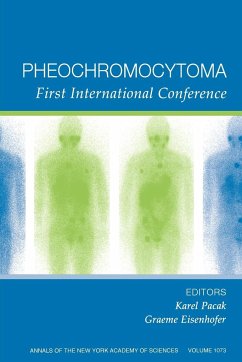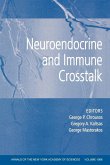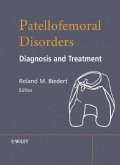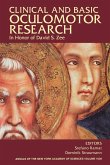KAREL PACAKFirst International Symposium, Volume 1073
Pheochromocytoma
First International Symposium, Volume 1073
Herausgeber: Pacak, Karel; Eisenhofer, Graeme
KAREL PACAKFirst International Symposium, Volume 1073
Pheochromocytoma
First International Symposium, Volume 1073
Herausgeber: Pacak, Karel; Eisenhofer, Graeme
- Broschiertes Buch
- Merkliste
- Auf die Merkliste
- Bewerten Bewerten
- Teilen
- Produkt teilen
- Produkterinnerung
- Produkterinnerung
Pheochromocytoma is a rare neuroendocrine tumor with a highly variable presentation. There is lack of agreement about the most efficient and cost-effective methods for diagnosis and localization of the tumor, which can be lethal if not identified and treated promptly.Autopsy studies indicate that up to 50% of all cases remain undiagnosed until death. Between 30 and 35% of the tumors have a hereditary basis. Development of malignancy is highly variable -- from less than 5% to more than 50% depending on the mutation; there is currently no effective cure. This volume encompasses a number of…mehr
Andere Kunden interessierten sich auch für
![Stress, Obesity, and Metabolic Syndrome, Volume 1083 Stress, Obesity, and Metabolic Syndrome, Volume 1083]() GEORGE P. CHROUSOSStress, Obesity, and Metabolic Syndrome, Volume 1083149,99 €
GEORGE P. CHROUSOSStress, Obesity, and Metabolic Syndrome, Volume 1083149,99 €![Neuroendocrine and Immune Crosstalk, Volume 1088 Neuroendocrine and Immune Crosstalk, Volume 1088]() CHROUSOSNeuroendocrine and Immune Crosstalk, Volume 1088162,99 €
CHROUSOSNeuroendocrine and Immune Crosstalk, Volume 1088162,99 €![Oral-Based Diagnostics, Volume 1098 Oral-Based Diagnostics, Volume 1098]() Daniel MalamudOral-Based Diagnostics, Volume 1098151,99 €
Daniel MalamudOral-Based Diagnostics, Volume 1098151,99 €![Patellofemoral Disorders Patellofemoral Disorders]() Patellofemoral Disorders400,99 €
Patellofemoral Disorders400,99 €![Clinical and Basic Oculomotor Research Clinical and Basic Oculomotor Research]() Stefano Ramat / Dominik Straumann (eds.)Clinical and Basic Oculomotor Research151,99 €
Stefano Ramat / Dominik Straumann (eds.)Clinical and Basic Oculomotor Research151,99 €![Big Data Analysis and Artificial Intelligence for Medical Sciences Big Data Analysis and Artificial Intelligence for Medical Sciences]() Paola LeccaBig Data Analysis and Artificial Intelligence for Medical Sciences176,99 €
Paola LeccaBig Data Analysis and Artificial Intelligence for Medical Sciences176,99 €![Flow Cytometry Principles for Clinical Laboratory Practice Flow Cytometry Principles for Clinical Laboratory Practice]() Marilyn A OwensFlow Cytometry Principles for Clinical Laboratory Practice183,99 €
Marilyn A OwensFlow Cytometry Principles for Clinical Laboratory Practice183,99 €-
-
-
Pheochromocytoma is a rare neuroendocrine tumor with a highly variable presentation. There is lack of agreement about the most efficient and cost-effective methods for diagnosis and localization of the tumor, which can be lethal if not identified and treated promptly.Autopsy studies indicate that up to 50% of all cases remain undiagnosed until death. Between 30 and 35% of the tumors have a hereditary basis. Development of malignancy is highly variable -- from less than 5% to more than 50% depending on the mutation; there is currently no effective cure. This volume encompasses a number of themes in several sections: genetics and clinical decision-making; genetics, molecular pathways of tumorigenesis, and divergent phenotypes; kaleidoscopic presentations and a minefield for differential diagnosis of pheochromocytoma; biochemical diagnosis: can we reach consensus?; tumor localization and the evolving importance of functional imaging; and new molecular markers and targets for diagnosis and treatment of malignant pheochromcytoma. NOTE: Annals volumes are available for sale as individual books or as a journal. For information on institutional journal subscriptions, please visit www.blackwellpublishing.com/nyas. ACADEMY MEMBERS: Please contact the New York Academy of Sciences directly to place your order (www.nyas.org). Members of the New York Academy of Science receive full-text access to the Annals online and discounts on print volumes. Please visit www.nyas.org/membership/main.asp for more information about becoming a member.
Produktdetails
- Produktdetails
- Verlag: Wiley
- Seitenzahl: 328
- Erscheinungstermin: 21. August 2006
- Englisch
- Abmessung: 229mm x 152mm x 32mm
- Gewicht: 868g
- ISBN-13: 9781573315975
- ISBN-10: 1573315974
- Artikelnr.: 22707129
- Herstellerkennzeichnung
- Libri GmbH
- Europaallee 1
- 36244 Bad Hersfeld
- gpsr@libri.de
- Verlag: Wiley
- Seitenzahl: 328
- Erscheinungstermin: 21. August 2006
- Englisch
- Abmessung: 229mm x 152mm x 32mm
- Gewicht: 868g
- ISBN-13: 9781573315975
- ISBN-10: 1573315974
- Artikelnr.: 22707129
- Herstellerkennzeichnung
- Libri GmbH
- Europaallee 1
- 36244 Bad Hersfeld
- gpsr@libri.de
Karel Pacak is a professor who established the Pheochromocytoma Research Program at the NIH, one of the most prestigious and largest programs worldwide, and has published over 80 articles/book chapters on this topic. He has Introduced new biochemical and imaging approaches to this tumor, especially the use of 18F-fluorodopamine in localization of pheochromocytoma. He also developed new biochemical and imaging algorithms for pheochromocytoma for practicing physicians. Moreover, developed new animal model of metastatic pheochromocytoma. Currently working as the Chief of Section on Medical Neuroendocrinology, NICHD. He is also Professor of Medicine at Georgetown University, Washington DC and Charles University, Prague, Czech Republic. Graham Eisenhofer is a clinical biochemist with broad experience in basic and patient-oriented research on neuroedocrine and autonomic nervous system function in health and disease. Relevant achievements include codevelopment with Dr. Jacques Lenders of the first HPLC method for measurements of plasma free metanephrines, a test now used for improved biochemical diagnosis of pheochromocytoma. Dr. Eisenhofer was also responsible for initial development of 18F-fluorodopamine as a positron emission tomographic imaging agent for visualizing sympathetic nerves and neuroendocrine tumors. Dr. Eisenhofer co-chairs the Pheochromocytoma RESearch Support ORganization.
Introduction: Karel Pacak and Graeme Eisenhofer.
Part I: Pheochromocytoma: A Kaleidoscope of Presentations and a Minefield
for Differential Diagnosis: 1. Diagnostic Challenges and Vagaries of
Pheochromocytoma: William M. Manger.
2. Clinical Characteristics of Incidentally-Discovered Pheochromocytoma
Based on Experience in 50 Proven Cases: Emmanuel L. Bravo.
3. Clinical Experience with 1080 Adrenal Incidentalomas Observed at a
Single Endocrinological Center: A Place for Chromaffin Tumors: Anna
Kasperlik-Zaluska.
4. Characteristics of pheochromocytoma in a 4- to 20-year-old population:
Marta Barontini.
5. Pheochromocytoma During Pregnancy: A Literature Survey: Henri Timmers.
6. Lack of Symptomatology in Patients with Histological Evidence of
Pheochromocytoma: A Diagnostic Challenge: Debbie L. Cohen.
Part II: Genetics: Increasing Importance for Clinical Decision-Making:.
7. Predictors and Prevalence of Paraganglioma Syndrome Associated with
Mutations of the SDHC Gene: Hartmut Neumann.
8. Genetic Analysis of Pheochromocytoma: The Rotterdam Experience: Winand
N.M. Dinjens.
9. Molecular Genetic Analysis of the NF1 Gene in
Neurofibromatosis-Associated Pheochromocytoma: Birke Bausch.
10. Candidate Gene Mutation Analysis in Pediatric Pheochromocytomas: Ronald
R. de Krijger.
11. Familial Non-Syndromic Pheochromocytoma: Giuseppe Opocher.
12. Genetic Mutation Screening in an Italian Cohort of Non-Syndromic
Pheochromocytoma/ Paraganglioma Patients: Maurizio Castellano.
13. Importance of SDHB Mutation Testing in Patients with Malignant
Pheochromocytoma: Frederieke Brouwers.
Part III: Pheochromocytoma/Paraganglioma Syndromes:.
14. Paragangliomas: Clinical Overview: William F. Young, Jr.
15. Genetics of Pheochromocytoma/Paraganglioma Syndromes: Anne-Paule
Gimenez-Roqueplo.
16. SDHD, SDHB Mutations: Different Phenotype and Penetrance (International
SDH Consortium): Diana Benn.
17. Mutational Spectrum of Paragangliomas Obtained from Archival Paraffin
Sections: Jeffrey Kant.
18. Sporadic SDHB Mutation in an Extra-Adrenal Pheochromocytoma: Francien
H. Van Nederveen.
19. SDHD Founder Mutation in Italian Families with Head and Neck
Paraganglioma: Francesca Schiavi.
Part IV: Tumor Biology, Molecular Pathways of and Genotype/Phenotype
Relationships:.
20. Role of Familial Pheochromocytoma Genes in Developmental Culling of
Sympathetic Progenitors: William Kaelin.
21. RET Receptor Signalling: Dissecting Receptor Function and Dysfunction:
Lois Mulligan.
22. Hereditary Paraganglioma: An Emerging Link Between Krebs Cycle and
Hypoxic Signaling: Bora E. Baysal.
23. Linking Hypoxia and Redox Signals in Pheochromocytoma: Transcription
Association of VHL and SDH Mutations: Patricia Dahia.
24. Expression of mRNAs for Succinate Dehydrogenase Subunits and Related
Genes in Pheochromocytoma: Kazumasa Isobe.
25. Low SDHB Expression by Immunohistochemistry Discriminates
Pheochromocytoma with SDHB, SDHD and VHL Mutations from Other Hereditary
Forms: Sandro Santagata.
26. Mouse Pheochromocytoma Cell Lines Reveal Transcriptional Silencing of
Adrenergic Phenotype by Neurotrophin and cAMP: Marian J. Evinger.
Part V: Biochemical Diagnosis and Tumor Localization:.
27. Plasma Free Metanephrines for Diagnosis of Pheochromocytoma: False
Positives and Effects of Sampling Conditions: Jacques W.M. Lenders.
28. Advancements in Biochemical Diagnosis of Pheochromocytoma: Ravinder
Singh.
29. Multicenter Study on the Diagnostic Value of a New RIA for the
Detection of Free Plasma Metanephrines in the Work-Up for Pheochromocytoma:
Tomas Lenz.
30. Diagnostic Value of Plasma and Urinary Metanephrines and Catecholamines
for the Diagnosis of Pheochromocytoma in Patients with Adrenal mass:
Stephan Petersenn.
31. Evolving Role of PET Imaging for Diagnostic Localization of
Pheochromocytoma: Karel Pacak.
32. Elusive Pheochromocytomas: Detection with Functional Imaging Using MIBG
and FDG PET: Barry L. Shulkin.
Part VI: Management and Treatment of Pheochromocytoma:.
33. Risk-Oriented Surgical Approach to Hereditary Pheochromocytoma: Henning
Dralle.
34. The Course of Urinary Metanephrine Excretion in Recurrent and Malignant
Pheochromocytoma: Pierre-Francois Plouin.
35. Mortality Associated with Pheochromocytoma: Increased Risk of
Additional Tumors: Amir Khorram-Manesh.
36. Clinical Analysis and Management of Pheochromocytoma: Experience from
360 Cases in Peking Union Medical College Hospital (PUMCH), Beijing, China:
Zheng-pei Zeng.
37. Magnesium Sulfate in the Perioperative Management of Pheochromocytoma:
Michael F. James.
38. Treatment of Bilateral Pheochromocytoma and Adrenal Medullary
Hyperplasia: Svante Jansson.
Part VII: Malignant Pheochromocytoma:.
39. Phase II Study of High-Dose 131I-MIBG Therapy for Patients with
Malignant Pheochromocytoma and Paraganglioma: Paul A. Fitzgerald.
40. 131I-MIBG Radiotherapy: Long-term Experience with Treatment of
Malignant Pheochromocytoma and Paraganglioma: Jon P. Gockerman.
41. AT2 Receptor Stimulation May Halt Progression of Pheochromocytoma:
Morris J. Brown.
42. Can Quantification of VMAT and SSTR Expression be Helpful for Planning
Radionuclide Therapy of Malignant Pheochromocytomas: Lars Kölby.
43. Development of Novel Tools for the Diagnosis and Prognosis of
Pheochromocytomas Using Peptide Marker Immunoassay and Gene Expression
Profiling Approaches: Youssef Anouar.
44. Gene Expression Profiling of Benign and Malignant Pheochromocytoma: New
Markers for Prognosis and Targets for Treatments: Peter Munson & Graeme
Eisenhofer
Part I: Pheochromocytoma: A Kaleidoscope of Presentations and a Minefield
for Differential Diagnosis: 1. Diagnostic Challenges and Vagaries of
Pheochromocytoma: William M. Manger.
2. Clinical Characteristics of Incidentally-Discovered Pheochromocytoma
Based on Experience in 50 Proven Cases: Emmanuel L. Bravo.
3. Clinical Experience with 1080 Adrenal Incidentalomas Observed at a
Single Endocrinological Center: A Place for Chromaffin Tumors: Anna
Kasperlik-Zaluska.
4. Characteristics of pheochromocytoma in a 4- to 20-year-old population:
Marta Barontini.
5. Pheochromocytoma During Pregnancy: A Literature Survey: Henri Timmers.
6. Lack of Symptomatology in Patients with Histological Evidence of
Pheochromocytoma: A Diagnostic Challenge: Debbie L. Cohen.
Part II: Genetics: Increasing Importance for Clinical Decision-Making:.
7. Predictors and Prevalence of Paraganglioma Syndrome Associated with
Mutations of the SDHC Gene: Hartmut Neumann.
8. Genetic Analysis of Pheochromocytoma: The Rotterdam Experience: Winand
N.M. Dinjens.
9. Molecular Genetic Analysis of the NF1 Gene in
Neurofibromatosis-Associated Pheochromocytoma: Birke Bausch.
10. Candidate Gene Mutation Analysis in Pediatric Pheochromocytomas: Ronald
R. de Krijger.
11. Familial Non-Syndromic Pheochromocytoma: Giuseppe Opocher.
12. Genetic Mutation Screening in an Italian Cohort of Non-Syndromic
Pheochromocytoma/ Paraganglioma Patients: Maurizio Castellano.
13. Importance of SDHB Mutation Testing in Patients with Malignant
Pheochromocytoma: Frederieke Brouwers.
Part III: Pheochromocytoma/Paraganglioma Syndromes:.
14. Paragangliomas: Clinical Overview: William F. Young, Jr.
15. Genetics of Pheochromocytoma/Paraganglioma Syndromes: Anne-Paule
Gimenez-Roqueplo.
16. SDHD, SDHB Mutations: Different Phenotype and Penetrance (International
SDH Consortium): Diana Benn.
17. Mutational Spectrum of Paragangliomas Obtained from Archival Paraffin
Sections: Jeffrey Kant.
18. Sporadic SDHB Mutation in an Extra-Adrenal Pheochromocytoma: Francien
H. Van Nederveen.
19. SDHD Founder Mutation in Italian Families with Head and Neck
Paraganglioma: Francesca Schiavi.
Part IV: Tumor Biology, Molecular Pathways of and Genotype/Phenotype
Relationships:.
20. Role of Familial Pheochromocytoma Genes in Developmental Culling of
Sympathetic Progenitors: William Kaelin.
21. RET Receptor Signalling: Dissecting Receptor Function and Dysfunction:
Lois Mulligan.
22. Hereditary Paraganglioma: An Emerging Link Between Krebs Cycle and
Hypoxic Signaling: Bora E. Baysal.
23. Linking Hypoxia and Redox Signals in Pheochromocytoma: Transcription
Association of VHL and SDH Mutations: Patricia Dahia.
24. Expression of mRNAs for Succinate Dehydrogenase Subunits and Related
Genes in Pheochromocytoma: Kazumasa Isobe.
25. Low SDHB Expression by Immunohistochemistry Discriminates
Pheochromocytoma with SDHB, SDHD and VHL Mutations from Other Hereditary
Forms: Sandro Santagata.
26. Mouse Pheochromocytoma Cell Lines Reveal Transcriptional Silencing of
Adrenergic Phenotype by Neurotrophin and cAMP: Marian J. Evinger.
Part V: Biochemical Diagnosis and Tumor Localization:.
27. Plasma Free Metanephrines for Diagnosis of Pheochromocytoma: False
Positives and Effects of Sampling Conditions: Jacques W.M. Lenders.
28. Advancements in Biochemical Diagnosis of Pheochromocytoma: Ravinder
Singh.
29. Multicenter Study on the Diagnostic Value of a New RIA for the
Detection of Free Plasma Metanephrines in the Work-Up for Pheochromocytoma:
Tomas Lenz.
30. Diagnostic Value of Plasma and Urinary Metanephrines and Catecholamines
for the Diagnosis of Pheochromocytoma in Patients with Adrenal mass:
Stephan Petersenn.
31. Evolving Role of PET Imaging for Diagnostic Localization of
Pheochromocytoma: Karel Pacak.
32. Elusive Pheochromocytomas: Detection with Functional Imaging Using MIBG
and FDG PET: Barry L. Shulkin.
Part VI: Management and Treatment of Pheochromocytoma:.
33. Risk-Oriented Surgical Approach to Hereditary Pheochromocytoma: Henning
Dralle.
34. The Course of Urinary Metanephrine Excretion in Recurrent and Malignant
Pheochromocytoma: Pierre-Francois Plouin.
35. Mortality Associated with Pheochromocytoma: Increased Risk of
Additional Tumors: Amir Khorram-Manesh.
36. Clinical Analysis and Management of Pheochromocytoma: Experience from
360 Cases in Peking Union Medical College Hospital (PUMCH), Beijing, China:
Zheng-pei Zeng.
37. Magnesium Sulfate in the Perioperative Management of Pheochromocytoma:
Michael F. James.
38. Treatment of Bilateral Pheochromocytoma and Adrenal Medullary
Hyperplasia: Svante Jansson.
Part VII: Malignant Pheochromocytoma:.
39. Phase II Study of High-Dose 131I-MIBG Therapy for Patients with
Malignant Pheochromocytoma and Paraganglioma: Paul A. Fitzgerald.
40. 131I-MIBG Radiotherapy: Long-term Experience with Treatment of
Malignant Pheochromocytoma and Paraganglioma: Jon P. Gockerman.
41. AT2 Receptor Stimulation May Halt Progression of Pheochromocytoma:
Morris J. Brown.
42. Can Quantification of VMAT and SSTR Expression be Helpful for Planning
Radionuclide Therapy of Malignant Pheochromocytomas: Lars Kölby.
43. Development of Novel Tools for the Diagnosis and Prognosis of
Pheochromocytomas Using Peptide Marker Immunoassay and Gene Expression
Profiling Approaches: Youssef Anouar.
44. Gene Expression Profiling of Benign and Malignant Pheochromocytoma: New
Markers for Prognosis and Targets for Treatments: Peter Munson & Graeme
Eisenhofer
Introduction: Karel Pacak and Graeme Eisenhofer.
Part I: Pheochromocytoma: A Kaleidoscope of Presentations and a Minefield
for Differential Diagnosis: 1. Diagnostic Challenges and Vagaries of
Pheochromocytoma: William M. Manger.
2. Clinical Characteristics of Incidentally-Discovered Pheochromocytoma
Based on Experience in 50 Proven Cases: Emmanuel L. Bravo.
3. Clinical Experience with 1080 Adrenal Incidentalomas Observed at a
Single Endocrinological Center: A Place for Chromaffin Tumors: Anna
Kasperlik-Zaluska.
4. Characteristics of pheochromocytoma in a 4- to 20-year-old population:
Marta Barontini.
5. Pheochromocytoma During Pregnancy: A Literature Survey: Henri Timmers.
6. Lack of Symptomatology in Patients with Histological Evidence of
Pheochromocytoma: A Diagnostic Challenge: Debbie L. Cohen.
Part II: Genetics: Increasing Importance for Clinical Decision-Making:.
7. Predictors and Prevalence of Paraganglioma Syndrome Associated with
Mutations of the SDHC Gene: Hartmut Neumann.
8. Genetic Analysis of Pheochromocytoma: The Rotterdam Experience: Winand
N.M. Dinjens.
9. Molecular Genetic Analysis of the NF1 Gene in
Neurofibromatosis-Associated Pheochromocytoma: Birke Bausch.
10. Candidate Gene Mutation Analysis in Pediatric Pheochromocytomas: Ronald
R. de Krijger.
11. Familial Non-Syndromic Pheochromocytoma: Giuseppe Opocher.
12. Genetic Mutation Screening in an Italian Cohort of Non-Syndromic
Pheochromocytoma/ Paraganglioma Patients: Maurizio Castellano.
13. Importance of SDHB Mutation Testing in Patients with Malignant
Pheochromocytoma: Frederieke Brouwers.
Part III: Pheochromocytoma/Paraganglioma Syndromes:.
14. Paragangliomas: Clinical Overview: William F. Young, Jr.
15. Genetics of Pheochromocytoma/Paraganglioma Syndromes: Anne-Paule
Gimenez-Roqueplo.
16. SDHD, SDHB Mutations: Different Phenotype and Penetrance (International
SDH Consortium): Diana Benn.
17. Mutational Spectrum of Paragangliomas Obtained from Archival Paraffin
Sections: Jeffrey Kant.
18. Sporadic SDHB Mutation in an Extra-Adrenal Pheochromocytoma: Francien
H. Van Nederveen.
19. SDHD Founder Mutation in Italian Families with Head and Neck
Paraganglioma: Francesca Schiavi.
Part IV: Tumor Biology, Molecular Pathways of and Genotype/Phenotype
Relationships:.
20. Role of Familial Pheochromocytoma Genes in Developmental Culling of
Sympathetic Progenitors: William Kaelin.
21. RET Receptor Signalling: Dissecting Receptor Function and Dysfunction:
Lois Mulligan.
22. Hereditary Paraganglioma: An Emerging Link Between Krebs Cycle and
Hypoxic Signaling: Bora E. Baysal.
23. Linking Hypoxia and Redox Signals in Pheochromocytoma: Transcription
Association of VHL and SDH Mutations: Patricia Dahia.
24. Expression of mRNAs for Succinate Dehydrogenase Subunits and Related
Genes in Pheochromocytoma: Kazumasa Isobe.
25. Low SDHB Expression by Immunohistochemistry Discriminates
Pheochromocytoma with SDHB, SDHD and VHL Mutations from Other Hereditary
Forms: Sandro Santagata.
26. Mouse Pheochromocytoma Cell Lines Reveal Transcriptional Silencing of
Adrenergic Phenotype by Neurotrophin and cAMP: Marian J. Evinger.
Part V: Biochemical Diagnosis and Tumor Localization:.
27. Plasma Free Metanephrines for Diagnosis of Pheochromocytoma: False
Positives and Effects of Sampling Conditions: Jacques W.M. Lenders.
28. Advancements in Biochemical Diagnosis of Pheochromocytoma: Ravinder
Singh.
29. Multicenter Study on the Diagnostic Value of a New RIA for the
Detection of Free Plasma Metanephrines in the Work-Up for Pheochromocytoma:
Tomas Lenz.
30. Diagnostic Value of Plasma and Urinary Metanephrines and Catecholamines
for the Diagnosis of Pheochromocytoma in Patients with Adrenal mass:
Stephan Petersenn.
31. Evolving Role of PET Imaging for Diagnostic Localization of
Pheochromocytoma: Karel Pacak.
32. Elusive Pheochromocytomas: Detection with Functional Imaging Using MIBG
and FDG PET: Barry L. Shulkin.
Part VI: Management and Treatment of Pheochromocytoma:.
33. Risk-Oriented Surgical Approach to Hereditary Pheochromocytoma: Henning
Dralle.
34. The Course of Urinary Metanephrine Excretion in Recurrent and Malignant
Pheochromocytoma: Pierre-Francois Plouin.
35. Mortality Associated with Pheochromocytoma: Increased Risk of
Additional Tumors: Amir Khorram-Manesh.
36. Clinical Analysis and Management of Pheochromocytoma: Experience from
360 Cases in Peking Union Medical College Hospital (PUMCH), Beijing, China:
Zheng-pei Zeng.
37. Magnesium Sulfate in the Perioperative Management of Pheochromocytoma:
Michael F. James.
38. Treatment of Bilateral Pheochromocytoma and Adrenal Medullary
Hyperplasia: Svante Jansson.
Part VII: Malignant Pheochromocytoma:.
39. Phase II Study of High-Dose 131I-MIBG Therapy for Patients with
Malignant Pheochromocytoma and Paraganglioma: Paul A. Fitzgerald.
40. 131I-MIBG Radiotherapy: Long-term Experience with Treatment of
Malignant Pheochromocytoma and Paraganglioma: Jon P. Gockerman.
41. AT2 Receptor Stimulation May Halt Progression of Pheochromocytoma:
Morris J. Brown.
42. Can Quantification of VMAT and SSTR Expression be Helpful for Planning
Radionuclide Therapy of Malignant Pheochromocytomas: Lars Kölby.
43. Development of Novel Tools for the Diagnosis and Prognosis of
Pheochromocytomas Using Peptide Marker Immunoassay and Gene Expression
Profiling Approaches: Youssef Anouar.
44. Gene Expression Profiling of Benign and Malignant Pheochromocytoma: New
Markers for Prognosis and Targets for Treatments: Peter Munson & Graeme
Eisenhofer
Part I: Pheochromocytoma: A Kaleidoscope of Presentations and a Minefield
for Differential Diagnosis: 1. Diagnostic Challenges and Vagaries of
Pheochromocytoma: William M. Manger.
2. Clinical Characteristics of Incidentally-Discovered Pheochromocytoma
Based on Experience in 50 Proven Cases: Emmanuel L. Bravo.
3. Clinical Experience with 1080 Adrenal Incidentalomas Observed at a
Single Endocrinological Center: A Place for Chromaffin Tumors: Anna
Kasperlik-Zaluska.
4. Characteristics of pheochromocytoma in a 4- to 20-year-old population:
Marta Barontini.
5. Pheochromocytoma During Pregnancy: A Literature Survey: Henri Timmers.
6. Lack of Symptomatology in Patients with Histological Evidence of
Pheochromocytoma: A Diagnostic Challenge: Debbie L. Cohen.
Part II: Genetics: Increasing Importance for Clinical Decision-Making:.
7. Predictors and Prevalence of Paraganglioma Syndrome Associated with
Mutations of the SDHC Gene: Hartmut Neumann.
8. Genetic Analysis of Pheochromocytoma: The Rotterdam Experience: Winand
N.M. Dinjens.
9. Molecular Genetic Analysis of the NF1 Gene in
Neurofibromatosis-Associated Pheochromocytoma: Birke Bausch.
10. Candidate Gene Mutation Analysis in Pediatric Pheochromocytomas: Ronald
R. de Krijger.
11. Familial Non-Syndromic Pheochromocytoma: Giuseppe Opocher.
12. Genetic Mutation Screening in an Italian Cohort of Non-Syndromic
Pheochromocytoma/ Paraganglioma Patients: Maurizio Castellano.
13. Importance of SDHB Mutation Testing in Patients with Malignant
Pheochromocytoma: Frederieke Brouwers.
Part III: Pheochromocytoma/Paraganglioma Syndromes:.
14. Paragangliomas: Clinical Overview: William F. Young, Jr.
15. Genetics of Pheochromocytoma/Paraganglioma Syndromes: Anne-Paule
Gimenez-Roqueplo.
16. SDHD, SDHB Mutations: Different Phenotype and Penetrance (International
SDH Consortium): Diana Benn.
17. Mutational Spectrum of Paragangliomas Obtained from Archival Paraffin
Sections: Jeffrey Kant.
18. Sporadic SDHB Mutation in an Extra-Adrenal Pheochromocytoma: Francien
H. Van Nederveen.
19. SDHD Founder Mutation in Italian Families with Head and Neck
Paraganglioma: Francesca Schiavi.
Part IV: Tumor Biology, Molecular Pathways of and Genotype/Phenotype
Relationships:.
20. Role of Familial Pheochromocytoma Genes in Developmental Culling of
Sympathetic Progenitors: William Kaelin.
21. RET Receptor Signalling: Dissecting Receptor Function and Dysfunction:
Lois Mulligan.
22. Hereditary Paraganglioma: An Emerging Link Between Krebs Cycle and
Hypoxic Signaling: Bora E. Baysal.
23. Linking Hypoxia and Redox Signals in Pheochromocytoma: Transcription
Association of VHL and SDH Mutations: Patricia Dahia.
24. Expression of mRNAs for Succinate Dehydrogenase Subunits and Related
Genes in Pheochromocytoma: Kazumasa Isobe.
25. Low SDHB Expression by Immunohistochemistry Discriminates
Pheochromocytoma with SDHB, SDHD and VHL Mutations from Other Hereditary
Forms: Sandro Santagata.
26. Mouse Pheochromocytoma Cell Lines Reveal Transcriptional Silencing of
Adrenergic Phenotype by Neurotrophin and cAMP: Marian J. Evinger.
Part V: Biochemical Diagnosis and Tumor Localization:.
27. Plasma Free Metanephrines for Diagnosis of Pheochromocytoma: False
Positives and Effects of Sampling Conditions: Jacques W.M. Lenders.
28. Advancements in Biochemical Diagnosis of Pheochromocytoma: Ravinder
Singh.
29. Multicenter Study on the Diagnostic Value of a New RIA for the
Detection of Free Plasma Metanephrines in the Work-Up for Pheochromocytoma:
Tomas Lenz.
30. Diagnostic Value of Plasma and Urinary Metanephrines and Catecholamines
for the Diagnosis of Pheochromocytoma in Patients with Adrenal mass:
Stephan Petersenn.
31. Evolving Role of PET Imaging for Diagnostic Localization of
Pheochromocytoma: Karel Pacak.
32. Elusive Pheochromocytomas: Detection with Functional Imaging Using MIBG
and FDG PET: Barry L. Shulkin.
Part VI: Management and Treatment of Pheochromocytoma:.
33. Risk-Oriented Surgical Approach to Hereditary Pheochromocytoma: Henning
Dralle.
34. The Course of Urinary Metanephrine Excretion in Recurrent and Malignant
Pheochromocytoma: Pierre-Francois Plouin.
35. Mortality Associated with Pheochromocytoma: Increased Risk of
Additional Tumors: Amir Khorram-Manesh.
36. Clinical Analysis and Management of Pheochromocytoma: Experience from
360 Cases in Peking Union Medical College Hospital (PUMCH), Beijing, China:
Zheng-pei Zeng.
37. Magnesium Sulfate in the Perioperative Management of Pheochromocytoma:
Michael F. James.
38. Treatment of Bilateral Pheochromocytoma and Adrenal Medullary
Hyperplasia: Svante Jansson.
Part VII: Malignant Pheochromocytoma:.
39. Phase II Study of High-Dose 131I-MIBG Therapy for Patients with
Malignant Pheochromocytoma and Paraganglioma: Paul A. Fitzgerald.
40. 131I-MIBG Radiotherapy: Long-term Experience with Treatment of
Malignant Pheochromocytoma and Paraganglioma: Jon P. Gockerman.
41. AT2 Receptor Stimulation May Halt Progression of Pheochromocytoma:
Morris J. Brown.
42. Can Quantification of VMAT and SSTR Expression be Helpful for Planning
Radionuclide Therapy of Malignant Pheochromocytomas: Lars Kölby.
43. Development of Novel Tools for the Diagnosis and Prognosis of
Pheochromocytomas Using Peptide Marker Immunoassay and Gene Expression
Profiling Approaches: Youssef Anouar.
44. Gene Expression Profiling of Benign and Malignant Pheochromocytoma: New
Markers for Prognosis and Targets for Treatments: Peter Munson & Graeme
Eisenhofer








